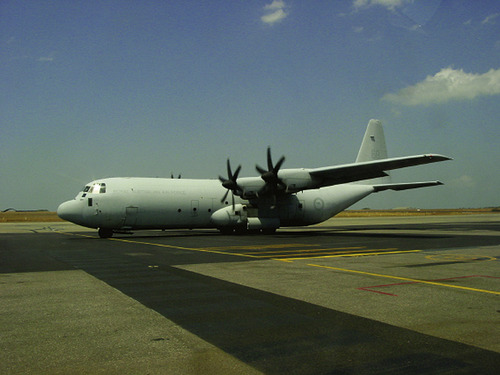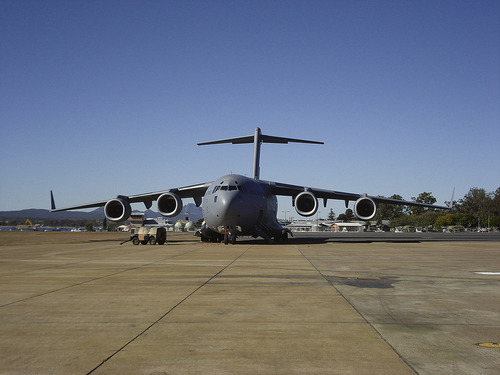CASE 50
 |
Incident
Following battlefield care and forward air medical evacuation (AME) to a surgical facility, the soldiers detailed in Case 44 (Incident B) now require transfer from the military theatre of operations to their home country for ongoing care–a distance of 8200 km (5095 miles).
As the medical officer in charge (OIC) of this operation, you are provided a patient manifest, which includes the three soldiers from the anti-personnel device explosion and a number of other ill and injured military personnel. In total, there are two very seriously ill (VSI) patients who are mechanically ventilated. One has an open abdomen and the other has undergone craniotomy and clot evacuation. A further 15 patients are immobile and stretcher-bound and 10 are ambulatory. No non-medical personnel (other than the air crew and patients) or equipment are planned to be transported.
Relevant information
Aircraft: As pictured on the previous page
Local resources: Military land ambulance (capable of dual patient carriage). Multiple AME teams (medical officer, nursing officer and medic)
Retrieval options: Civilian ICU and large military hospital
Other: Nil
Questions
50.1 Outline the various categories of military AME. Into which category does this mission fit?
50.2 In general terms, what is the role of the OIC in this mission?
50.3 How will the composition and number of AME teams be decided?
50.4 Compare and contrast the two aircraft pictured above. Which would be utilised for this mission and why?
Discussion
50.1 Forward AME
The field evacuation of casualties between points within the battlefield or from the battlefield to a forward medical facility for stabilisation (e.g. Case 44, Incident B)
Tactical AME
The movement of patients between medical facilities within an area of military operations
Strategic AME
The movement of patients from an area of military operations to a non-operational area
Military AME is also occasionally defined by:
This particular task would be defined as a strategic or special AME mission.
50.2 The OIC of the AME has overall responsibility for the mission. They oversee and coordinate clinical and logistic aspects and ensure that the aircraft is configured, staffed, equipped and prepared to accommodate the requirements of all patients and attending AME team members. Communication, clinical and logistic organisation and leadership are key requirements for this role. The OIC may not be the medical or nursing officer with the most medical or AME experience or with the highest rank. The OIC does not become directly involved in patient care.
A non-exhaustive list of OIC roles for the AME may include:
Communication
• With air crew (particularly load master) and aircraft captain.
• Flight plan.
• Refuelling requirements.
• Weather.
< div class='tao-gold-member'>
Only gold members can continue reading. Log In or Register to continue
Stay updated, free articles. Join our Telegram channel

Full access? Get Clinical Tree








